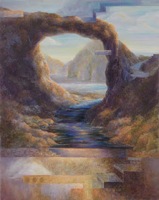Difference between revisions of "Segue"
(Created page with 'File:lighterstill.jpgright|frame ==Origin== Italian, there follows, from ''seguire'' to follow, from Latin ''sequi'' *[http://en.wikipedia.org/wi...') |
m (Text replacement - "http://" to "https://") |
||
| Line 3: | Line 3: | ||
==Origin== | ==Origin== | ||
Italian, there follows, from ''seguire'' to follow, from [[Latin]] ''sequi'' | Italian, there follows, from ''seguire'' to follow, from [[Latin]] ''sequi'' | ||
| − | *[ | + | *[https://en.wikipedia.org/wiki/18th_century 1740] |
==Definitions== | ==Definitions== | ||
*1: [[proceed]] to what follows without pause —used as a [[direction]] in [[music]] | *1: [[proceed]] to what follows without pause —used as a [[direction]] in [[music]] | ||
| Line 10: | Line 10: | ||
A '''segue''' is a smooth [[transition]] from one [[topic]] or section to the next. | A '''segue''' is a smooth [[transition]] from one [[topic]] or section to the next. | ||
| − | In [[music]], segue is a [[direction]] to the performer. It means continue (the next section) without a pause. It comes from the Italian "it follows". The term ''[ | + | In [[music]], segue is a [[direction]] to the performer. It means continue (the next section) without a pause. It comes from the Italian "it follows". The term ''[https://en.wikipedia.org/wiki/Attacca attacca]'' is also used in classical music. |
For written music it implies a [[transition]] from one section to the next without any break. In [[improvisation]], it is often used for transitions created as a part of the [[performance]], leading from one section to another. | For written music it implies a [[transition]] from one section to the next without any break. In [[improvisation]], it is often used for transitions created as a part of the [[performance]], leading from one section to another. | ||
| − | In live performance, a segue can occur during a [ | + | In live performance, a segue can occur during a [https://en.wikipedia.org/wiki/Jam_session jam session], where the [[improvisation]] of the end of one [[song]] [[progresses]] into a new song. Segues can even occur between groups of musicians during live [[performance]]. For example, as one band finishes its set, members of the following act replace members of the first band one by one, until a complete band swap occurs. |
| − | In recorded music, a segue is a seamless [[transition]] between one [[song]] and another. The [[effect]] is often [[achieved]] through [ | + | In recorded music, a segue is a seamless [[transition]] between one [[song]] and another. The [[effect]] is often [[achieved]] through [https://en.wikipedia.org/wiki/Beatmatching beatmatching], especially on [[dance]] and disco recordings, or through arrangements that create the effect of a musical suite, a classical style also used in many [https://en.wikipedia.org/wiki/Progressive_rock progressive rock recordings]. |
Some album notations distinguish track listings though the use of [[symbols]], such as a >, →, or / to indicate [[songs]] that [[flow]] seamlessly. | Some album notations distinguish track listings though the use of [[symbols]], such as a >, →, or / to indicate [[songs]] that [[flow]] seamlessly. | ||
| − | In [ | + | In [https://en.wikipedia.org/wiki/Journalism journalism], a segue is a [[method]] of smoothly transitioning from one [[topic]] to another. A segue allows the host or [[writer]] to naturally proceed to another topic without jarring the [[audience]]. A good segue makes the subject [[change]] seem like a natural extension of the [[discussion]]. |
[[Category: Music]] | [[Category: Music]] | ||
Latest revision as of 02:37, 13 December 2020
Origin
Italian, there follows, from seguire to follow, from Latin sequi
Definitions
- 1: proceed to what follows without pause —used as a direction in music
- 2: perform the music that follows like that which has preceded —used as a direction in music
Description
A segue is a smooth transition from one topic or section to the next.
In music, segue is a direction to the performer. It means continue (the next section) without a pause. It comes from the Italian "it follows". The term attacca is also used in classical music.
For written music it implies a transition from one section to the next without any break. In improvisation, it is often used for transitions created as a part of the performance, leading from one section to another.
In live performance, a segue can occur during a jam session, where the improvisation of the end of one song progresses into a new song. Segues can even occur between groups of musicians during live performance. For example, as one band finishes its set, members of the following act replace members of the first band one by one, until a complete band swap occurs.
In recorded music, a segue is a seamless transition between one song and another. The effect is often achieved through beatmatching, especially on dance and disco recordings, or through arrangements that create the effect of a musical suite, a classical style also used in many progressive rock recordings.
Some album notations distinguish track listings though the use of symbols, such as a >, →, or / to indicate songs that flow seamlessly.
In journalism, a segue is a method of smoothly transitioning from one topic to another. A segue allows the host or writer to naturally proceed to another topic without jarring the audience. A good segue makes the subject change seem like a natural extension of the discussion.
